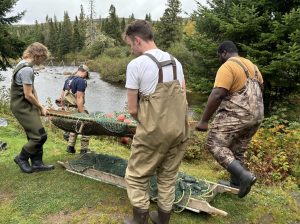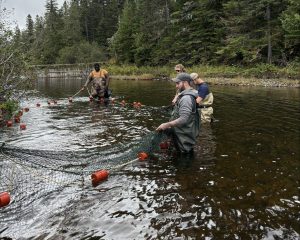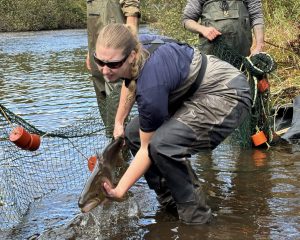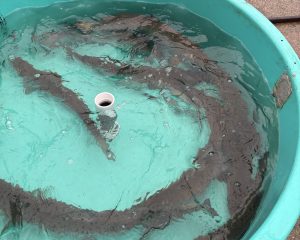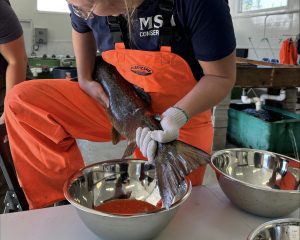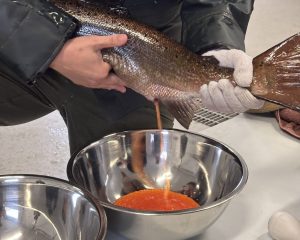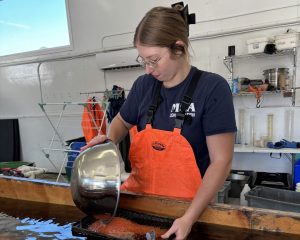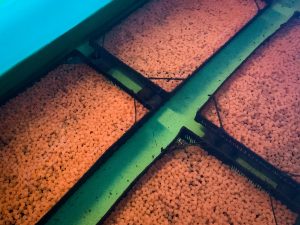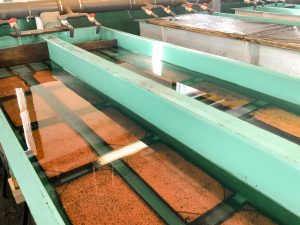The MSA has collected wild adult salmon broodstock from the Miramichi River for decades to aid in improving juvenile production in targeted areas that are under-utilized or inaccessible to wild spawning adults.
Each autumn, the MSA partners with anglers, outfitters, and volunteers to collect broodstock salmon from the Cains River and from the Main Southwest Miramichi River near Juniper. The Miramichi Salmon Association collects these broodstock in two ways:
1) Designated outfitters retain fish that are caught during the fall season and release them into “live boxes”, a type of trap which will keep salmon secured in the river until the Miramichi Salmon Association can retrieve them.
2) Field technicians from the Miramichi Salmon Association sweep salmon pools using “seine nets”, a type of mesh net that reaches the bottom of the pool. These nets gently herd fish into a small area so that they can be collected by hand.
On the Cains, broodstock are typically collected using the first method, while the second method is used to collect adults in Juniper pools. We do our best to use the same locations each year so we can track our stocking results and compare them to previous years. The captured salmon are placed in a vessel called a boot, and carried to an oxygenated water tank on the back of a truck for transport to the South Esk fish hatchery, where they will be spawned.
Once at the hatchery, the females are placed in a fish-friendly anesthetic bath to reduce their stress and allow their eggs to be gently removed into bowls. The eggs are fertilized using sperm from the males and water. The entire process only takes a few minutes and the adults are immediately released back to the wild. The fertilized eggs are placed in trays and rinsed to remove any biological tissue, then left for four hours until they become water-hardened. Finally, the eggs are moved to our egg room to be stored in troughs over the winter.
During the winter months, the eggs are closely monitored and cared for until they begin hatching into fry in the spring. Once the hatched fry reach maturity, they are stocked into their natal waters.
To read more about our Stocking Program, please use the link below.

